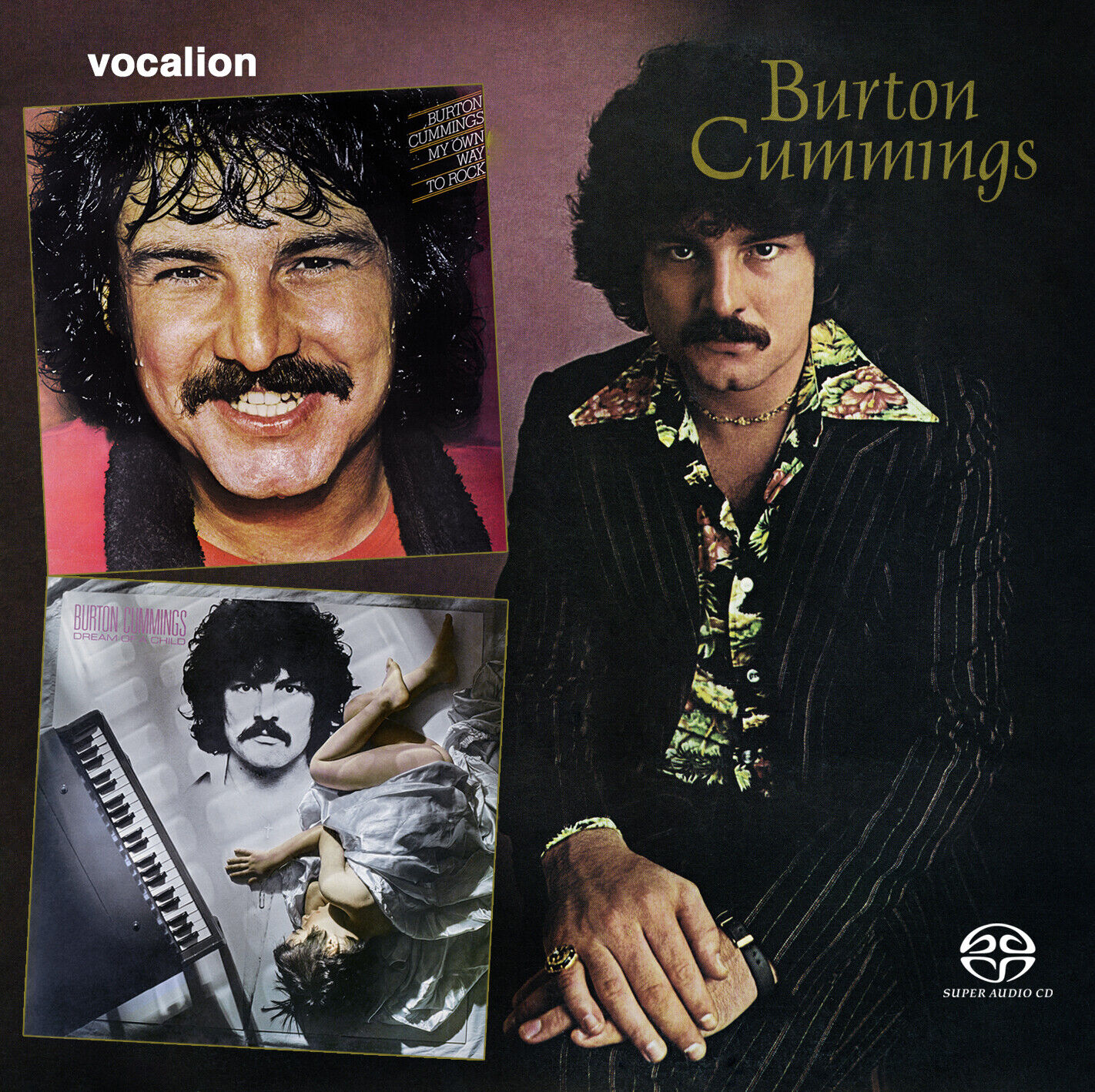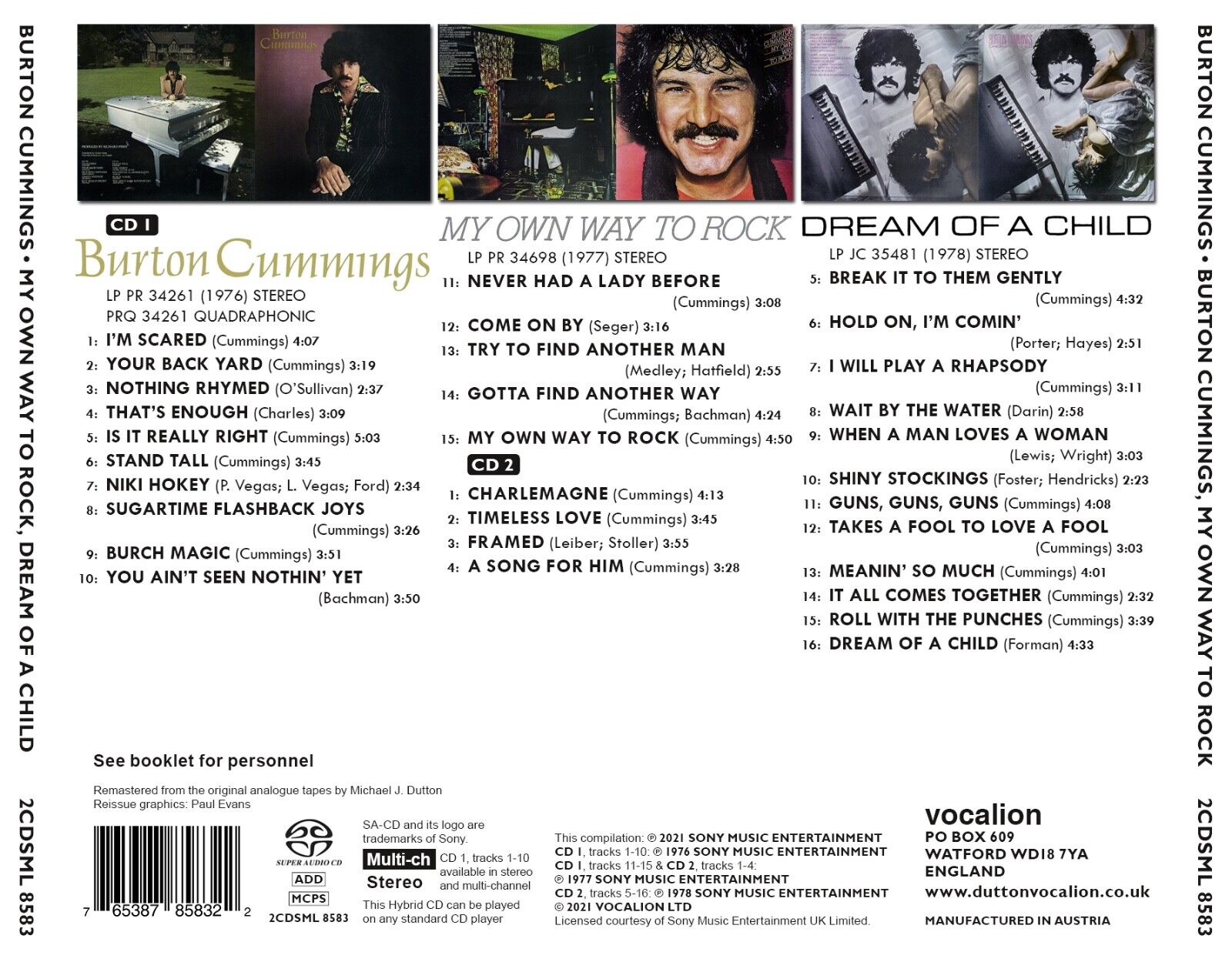Please post your thoughts and comments on this 2021 Multichannel SACD from Dutton Vocalion of the self-titled album by Guess Who lead singer Burton Cummings.
This Multichannel SACD features the first official release of the original Quadraphonic mix since the 1970s!
The Quadraphonic mix is also available to stream in Dolby Audio via Apple Music:
https://music.apple.com/us/album/burton-cummings/169925778
(Please note that this SACD also features the albums "My Own Way to Rock" and "Dream of a Child" in stereo only.)
BURTON CUMMINGS
LP PR 34261 (1976) STEREO/PRQ 34261 QUADRAPHONIC
1: I’M SCARED (Cummings)
2: YOUR BACK YARD (Cummings)
3: NOTHING RHYMED (O’Sullivan)
4: THAT’S ENOUGH (Charles)
5: IS IT REALLY RIGHT (Cummings)
6: STAND TALL (Cummings)
7: NIKI HOKEY (P. Vegas; L. Vegas; Ford)
8: SUGARTIME FLASHBACK JOYS (Cummings)
9: BURCH MAGIC (Cummings)
10: YOU AIN’T SEEN NOTHIN’ YET (Bachman)
Remastered from the original analogue tapes by Michael J. Dutton
Multi-Channel/Stereo
CD 1 tracks 1-10 available in stereo and multi-channel
CD 1 tracks 11-15 and CD 2 tracks 1-16 available ONLY in stereo
SA-CD
These Hybrid CDs can be played on any standard CD player
2CDSML8583


Last edited:




